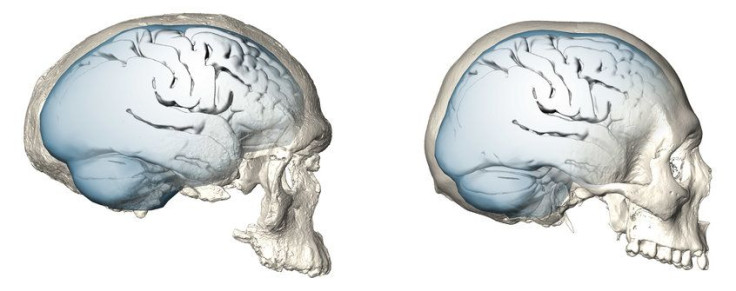Modern Rounded Human Brains An Evolutionary Step Less Than 100,000 Years Old

What sets humans apart from other species, despite all the biological and genetic similarities, is our brains. But it turns out that the brain of a Homo sapiens who lived about 100,000 years ago was actually differently shaped, compared to ours.
The earliest-known specimen of a Homo sapiens is from about 300,000 years ago, and it was discovered at a site in present-day Morocco. The Jebel Irhoud fossil had a modern-looking face that fell within the variations shown by modern humans and was therefore categorized as one. However, even at the time of its discovery’s announcement in June 2017, researchers said the shape of its braincase, or cranium, indicated that the human brain had evolved since.
Members from the same research team published a new paper Wednesday in which they analyzed 20 crania of Homo sapiens fossils from different geological periods and concluded that the present-day configuration of our brains was reached only between 100,000 and 35,000 years ago.
Simon Neubauer, Jean-Jacques Hublin and Philipp Gunz from Max Planck Institute for Evolutionary Anthropology (MPIEA), Germany, created virtual imprints of the internal structure of the crania. These endocasts approximated the size and shape of brains contained within the braincases, and as Homo sapiens evolved over time, the researchers found a gradual change from an elongated endocranial shape to the more roundish one we have today.
In particular, that change affects two regions of the brain — the parietal lobe and the cerebellum.

“Parietal brain areas are involved in orientation, attention, the perception of stimuli, sensorimotor transformations underlying planning, visuospatial integration, imagery, self-awareness, working and long-term memory, numerical processing, and tool use. The cerebellum is not only associated with motor-related functions like the coordination of movements and balance, but also with spatial processing, working memory, language, social cognition, and affective processing,” according to a statement Wednesday by MPIEA.
The researchers also found that changes to the shape of the brain were not related to size, since the Jebel Irhoud fossil from 300,000 years ago showed a brain that would fall within the normal variation range of present-day humans like us.
“The brain is arguably the most important organ for the abilities that make us human. We already knew that brain shape must have evolved within our own species, but we were surprised to discover just how recent these changes to brain organization were,” Neubauer said in the statement.
For the study, the researchers divided the fossils into three groups. The first comprised of early Homo sapiens from North and East Africa who lived between 300,000 and 200,000 years ago, the oldest known members of our species after the split from Neanderthals. The second was made up of individuals from Levantine and East Africa from 130,000 to 100,000 years ago. And the third group was of individuals who lived between 35,000 and 10,000 years ago. Some of the geological gaps in those groups were due to non-availability of crania in conditions good enough to include them in the analysis.
“We expect that future analyses based on additional fossil specimens filling the temporal gaps between our geologic age groups will further elucidate the mode of evolutionary shape change and help to pinpoint the exact time when present-day human brain shape was established,” they wrote in the study.
Titled “The evolution of modern human brain shape,” the open-access paper appeared online in the journal Science Advances.
© Copyright IBTimes 2024. All rights reserved.





















